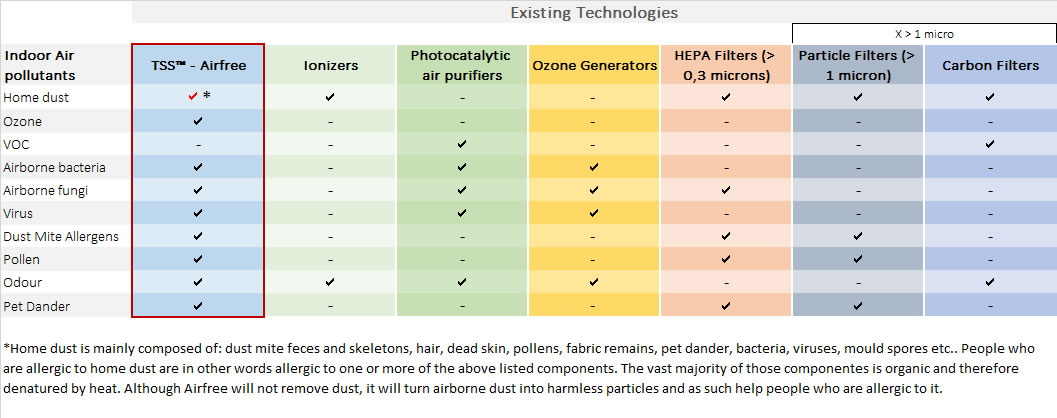Airfree® is the ONLY proven technology on the market that fully destroys and neutralizes mould spores, dust mite allergens, viruses, bacteria, pet dander, organic allergens, and ozone. Airfree® works by drawing air through tiny ducts into its patented TSS™ ceramic core where up to 99.99% of microorganisms are destroyed. Poisonous gases like ozone are there destroyed as well. The heat used in Airfree® has no noticeable effect on the temperature of the room.
Airfree® incinerates microorganisms at its heated capillaries. Contaminated air is dragged into Airfree’s ceramic core by air convection and microorganisms are destroyed at high temperatures regardless of how resistant and dangerous they might be.



